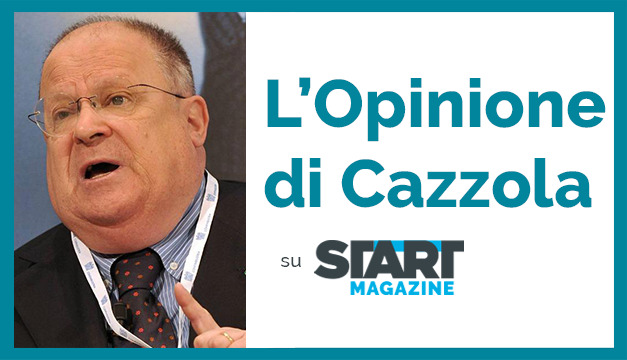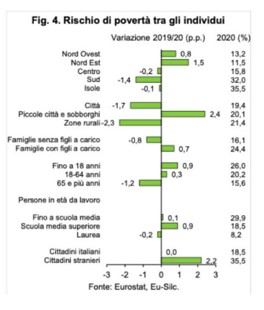Has income inequality really increased?

Brandolini's (Bank of Italy) article on income distribution in Italy during the pandemic denies many clichés. Giuliano Cazzola's analysis
Neodemos , the site promoted by the great demographer Massimo Livi Bacci, has recently published an article by Andrea Brandolini (deputy head of the Economics Department of the Bank of Italy) in which the author, in a personal capacity, addresses the issue of how the distribution of income has changed in Italy during the year of the COVID-19.
The article is interesting because it denies, at least in part, one of the many clich?? The collapse of the GDP in 2020 – underlines Brandolini – was by far the strongest, in a single year, in the history of republican Italy: in real terms, 9%, compared to 5.3% in 2009 (financial crisis global) and 3% in 2012 (sovereign debt crisis). As in other advanced economies, in Italy, however, the fall in GDP was only partially transferred to family incomes.
How was it possible that the dominant doctrine of the "perceived" is so clearly denied? Both public monetary subsidies (those existing and those introduced during the emergency) and the lower amount due for taxes and social security contributions – argues Brandolini – have greatly supported the disposable income of families, counteracting the significant drop in income from work and those from property. In 2020, real household income decreased in per capita terms by 1.8% compared to 2019, but it would have fallen by 6.8% without the increased redistributive intervention of the public budget. Therefore the policies of subsidies, refreshments, aid and support have achieved – at least in part – the objectives of public policies. The massive government intervention has also mitigated much of the widening in income inequality between households. At constant prices, the average equivalent income decreased by 1%; it increased for the poorest 10% of the population, as a result of public transfers, and for the richest 20%, while it decreased for the intermediate tenths of the population.
The share of individuals at risk of poverty remained virtually unchanged at 2019 levels at 20%; Also in this case, the role of non-pension monetary social benefits was decisive, without which the share of poor individuals would have grown by more than 3 percentage points. The stability of the share of people at risk of poverty (relative) represents – the author points out – an average of very different trends among the various socio-demographic groups. A notable increase in Northern regions was offset by a decrease in Southern regions, in line with the geographical spread of the pandemic in 2020. The incidence of poverty increased only in small towns and suburbs, while it decreased in cities and in rural areas, a very clear gap that will deserve further study. The incidence also decreased by 0.8 percentage points among households without dependent children, while it increased by 0.7 points among those with dependent children (among which it would have grown by 5 points in the absence of non-pension social transfers ). It is therefore not surprising that the share of poor individuals rose by 0.9 points among minors and 0.3 points among adults, while it decreased by 1.2 points among the elderly. Considering only people of working age (18-64 years), the risk of poverty has grown almost exclusively among those with a high school diploma; furthermore, it increased only among foreign citizens, to a very marked extent, while it remained stable among Italian citizens.
In conclusion, according to Brandolini, thanks to the exceptional public support, in 2020 the increase in household income inequality was modest overall when compared to the size of the economic contraction. The risk of (relative) poverty also did not substantially increase at the national level, although it varied to different extents between socio-demographic groups. The variations largely confirmed the existing stratification of income inequalities, mainly affecting families with dependent children, young people and foreign citizens, with the significant exception of regional differences, which instead moved in the opposite direction.

To fully assess the effects of the pandemic on income distribution, it will be necessary to wait – warns Brandolini – for the data for 2021, when economic growth was robust. From 2022, once the pandemic has subsided, attention will be directed to the consequences of the sharp rise in inflation.
This is a machine translation from Italian language of a post published on Start Magazine at the URL https://www.startmag.it/economia/aumento-disuguaglianze-reddito-brandolini/ on Thu, 24 Nov 2022 06:45:14 +0000.
